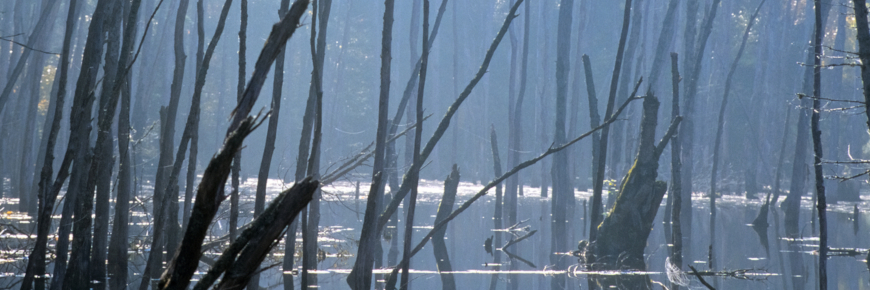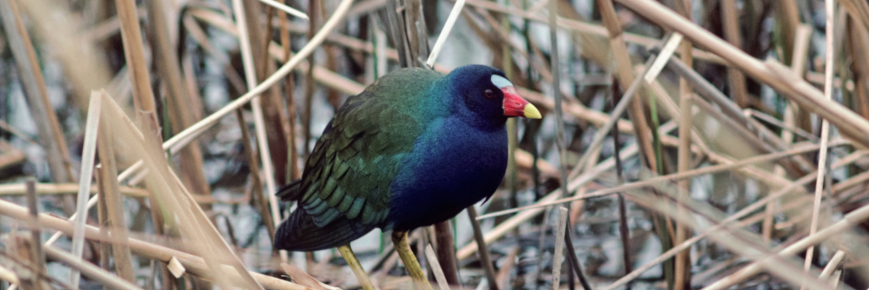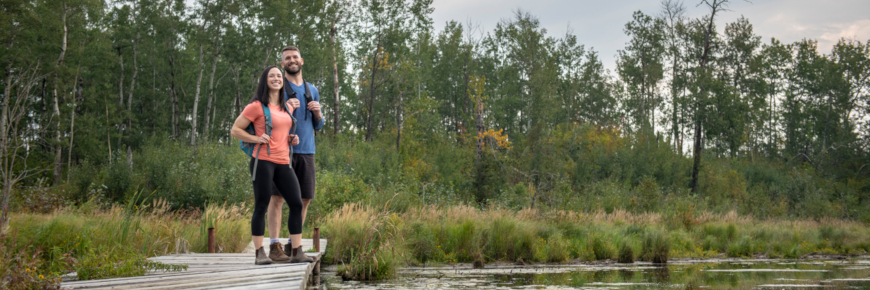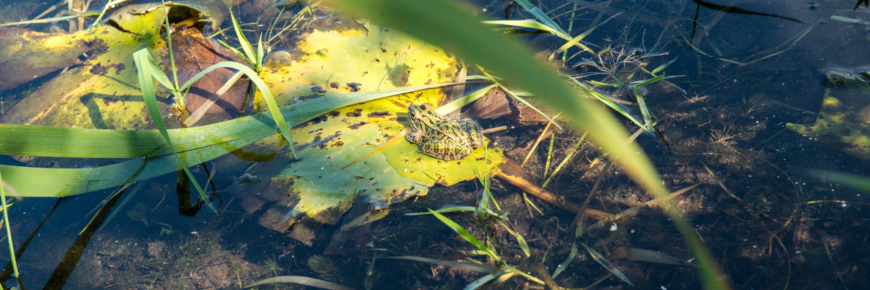
Wetlands: learning to love our swampy places
Wetlands are natural engineering systems, rich in wildlife, that keep our environment healthy.
A wetland is an in-between place—a mixture of water and land, beauty, and mud. As in-between places, they often go understudied and under-loved.
They’re understudied partly because they’re neither terrestrial nor aquatic but something in-between, says Dr. Chantal Vis, an aquatic ecosystem specialist at Parks Canada.
“You can only do so much from land,” she says, “and you can only do so much from a boat.”
They’re under-loved because, for many people, they are considered waste land. Historically they have often been drained to make way for agriculture and development. This trend continues today. Southern Ontario has lost up to 68 percent of its wetlands, while urban areas in the Prairies have lost up to 96 percent.
In popular culture, wetlands are often associated with snakes, monsters, and various dark influences. “The swamp is alive with a thousand eyes,” sang Jim Stafford in his 1973 hit single “Swamp Witch,” “and all of them watching you.”
But if Jim Stafford had wanted to capture the truth about swamps and other wetlands, he might have included a line about “ecosystem services…and all of them working for you.” Wetlands provide a wealth of such services ranging from carbon storage to flood and pollution control.
And you didn’t need to be alarmed by all those eyes, Jim. That’s just a sign of biological richness.

The benefits of wetlands
First of all, wetlands are biofilters. As water moves through them, sediment settles to the bottom. Pollutants in the sediment are broken down by microbes.
Wetland vegetation can also remove pollutants: cattails and bulrushes, for example, can absorb toxic heavy metals and fertilizer residues.
It’s no wonder that wetlands are sometimes called “nature’s kidneys.” As downstream receivers of waste from both human and natural sources, they are often used to transform degraded land such as landfill sites and sewage lagoons.
Besides serving as water filters, wetlands provide flood and erosion control, slowing and absorbing water. In dry times, they release the water they have stored.
But their work is not limited to the local ecosystem. Wetlands absorb carbon dioxide, a major greenhouse gas and contributor to climate change. This is especially true of bogs, which contain peat (partially decomposed organic matter.)
Finally, wetlands are “ecological supermarkets” in terms of their biological diversity. Scientists estimate that about a third of all North American species at risk depend on wetlands. In many parts of the globe, wetlands also provide fuel and building materials.

If you’ve seen one wetland, you’ve seen them all, right? Not exactly. Here are the five main types of wetlands identified under the Canadian Wetland Classification System.
A field guide to the soggy and squelchy
The beaver as role model
Ontario’s Rouge National Urban Park knows the value of wetlands. Working with Toronto and Region Conservation Authority, schools, community groups and Indigenous partners, the park has restored more than 60 hectares of wetland, stream and riverbank habitat since 2015.
The restoration work often involves actually re-creating wetlands in places where wet habitat would historically have existed. According to Julia Phillips, ecologist at Rouge, this is not always a matter of just “digging a hole and filling it up with water.”

“We look at drainage lines and, in some cases, places where we can put a berm to hold more water on the landscape,” she says. “We try to think like beavers.”
Together with the Toronto and Region Conservation Authority, Ms. Phillips and her team have created or restored a number of wetlands in the park, including some that are close to agricultural areas. Not only do the wetlands filter the agricultural run-off; they also reduce flooding on farmers’ fields, since the water has a place to go.
In restoring and creating wetlands, says Ms. Phillips, “we’re recreating that spongy landscape that was there in the first place.”
The work at Rouge and other national parks underlines the importance of wetlands as natural engineering systems that keep the living world healthy. “It’s the habitat we’ve lost the most of,” says Dr. Chantal Vis. “They do so much for us, and we don’t value them as much as we should.”
Somebody should put that into a song.
Related links
- Date modified :